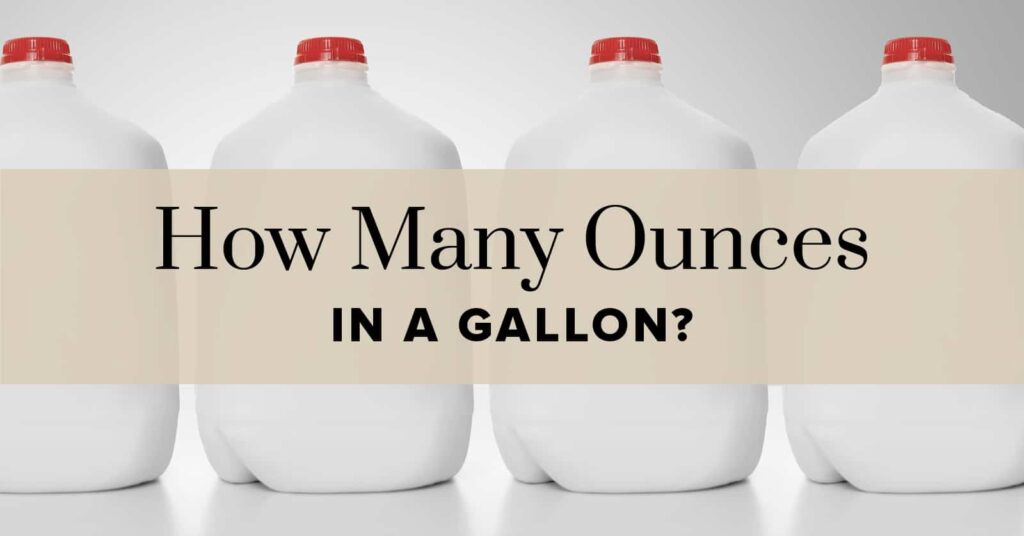1. Introduction to Fluid Ounces and Gallons
Fluid ounces and gallons are both units of measurement used to quantify volume, specifically for liquids. However, they differ in their size and application:
- Fluid Ounces (fl oz): A fluid ounce is a unit of volume in the US customary and imperial measurement systems. It is commonly used to measure smaller quantities of liquids, such as in cooking recipes or for measuring medications.
- Gallons (gal): A gallon is a larger unit of volume, also part of the US customary and imperial measurement systems. It is primarily used for measuring larger quantities of liquids, such as fuel or water.
2. Conversion Between Fluid Ounces and Gallons
The exact number of fluid ounces in a gallon depends on the specific system of measurement being used:
2.1. US Customary System
In the US customary system, 1 gallon is equal to 128 fluid ounces. This can be expressed as:1 gal = 128 fl oz
2.2. Imperial System
In the imperial system, which is used in the United Kingdom and some other countries, 1 gallon is equal to 160 fluid ounces. This can be expressed as:1 gal = 160 fl ozIt’s important to note that the US customary system and the imperial system use different definitions for the gallon, leading to the difference in the number of fluid ounces per gallon.
2.3. Practical Conversions
For practical purposes, it’s useful to know the following conversions:
- 1 cup = 8 fluid ounces
- 1 pint = 16 fluid ounces
- 1 quart = 32 fluid ounces
- 1 gallon = 4 quarts = 8 pints = 16 cups = 128 fluid ounces (US customary system)
These conversions can help you quickly estimate the number of fluid ounces in a given volume, even if you don’t have access to a calculator or conversion table.
3. Historical Context and Usage
The use of fluid ounces and gallons as units of measurement has a long history, with roots in ancient systems of measurement. Here’s a brief overview of their origins and evolution:
3.1. Ancient Systems of Measurement
The concept of measuring volume using containers of a specific size can be traced back to ancient civilizations, such as ancient Egypt, Greece, and Rome. These early systems of measurement laid the foundation for the development of modern units like fluid ounces and gallons.
3.2. Development of the US Customary and Imperial Systems
The US customary system and the imperial system both evolved from the same historical roots, but they diverged over time due to various factors, including the influence of trade and colonization. The US customary system was influenced by the British imperial system, but it has since developed its own unique set of units and definitions.
3.3. Current Usage
Today, fluid ounces and gallons are widely used in various contexts, including:
- Cooking and baking: Recipes often call for measurements in fluid ounces or cups.
- Measuring liquid medications: Liquid medications are frequently measured in fluid ounces or milliliters.
- Fuel and water measurements: Gallons are commonly used to measure larger quantities of liquids, such as fuel for vehicles or water consumption.
4. Practical Applications and Examples
Understanding the relationship between fluid ounces and gallons can be helpful in various everyday situations. Here are a few examples:
4.1. Cooking and Baking
When following a recipe that calls for a specific volume of liquid, it’s essential to know how to convert between fluid ounces and cups or gallons. For instance, if a recipe requires 1 cup of milk, you can easily convert it to fluid ounces (1 cup = 8 fl oz) or even gallons (1 gallon = 16 cups).
4.2. Measuring Liquid Medications
Many liquid medications are measured in milliliters (mL) or fluid ounces. If you need to convert between the two, you can use the following conversion:1 fl oz ≈ 30 mLThis conversion can be helpful when administering medications or when traveling with liquid medications and needing to adhere to TSA regulations.
4.3. Fuel and Water Measurements
Gallons are commonly used to measure larger quantities of liquids, such as fuel for vehicles or water consumption. Understanding the relationship between fluid ounces and gallons can help you estimate the total volume of liquid in a given container or calculate the amount of liquid needed for a specific task.
5. Summary Table of Key Information
| Aspect | US Customary System | Imperial System |
|---|---|---|
| Fluid Ounces per Gallon | 128 fl oz | 160 fl oz |
| 1 Cup | 8 fl oz | 8 fl oz |
| 1 Pint | 16 fl oz | 20 fl oz |
| 1 Quart | 32 fl oz | 40 fl oz |
| 1 Gallon | 128 fl oz | 160 fl oz |
6. FAQ Section
Q1: How many fluid ounces are in a gallon?
A: In the US customary system, 1 gallon is equal to 128 fluid ounces. In the imperial system, 1 gallon is equal to 160 fluid ounces.
Q2: What is the difference between the US customary system and the imperial system?
A: The main difference is that the US customary system and the imperial system use different definitions for the gallon, leading to a difference in the number of fluid ounces per gallon.
Q3: How do I convert between fluid ounces and cups?
A: 1 cup is equal to 8 fluid ounces.
Q4: How do I convert between fluid ounces and milliliters?
A: 1 fluid ounce is approximately equal to 30 milliliters.
Q5: What are some common uses for fluid ounces and gallons?
A: Fluid ounces are commonly used in cooking recipes and for measuring liquid medications, while gallons are commonly used to measure larger quantities of liquids, such as fuel for vehicles or water consumption.
Q6: How do I measure liquid medications in fluid ounces?
A: Most liquid medications come with dosage cups or syringes that are marked with fluid ounce measurements. Always follow the instructions provided by your healthcare provider or the medication label.
Q7: Can I use fluid ounces and gallons interchangeably?
A: No, fluid ounces and gallons are different units of measurement and cannot be used interchangeably. You need to know the specific conversion factor to convert between the two.
Q8: Are there any other units of volume measurement besides fluid ounces and gallons?
A: Yes, there are other units of volume measurement, such as liters, milliliters, and cubic inches. However, fluid ounces and gallons are the most commonly used units in the US customary system.
Q9: How do I calculate the total volume of a liquid in a container?
A: To calculate the total volume of a liquid in a container, multiply the number of gallons by 128 (if using the US customary system) or 160 (if using the imperial system) to get the total number of fluid ounces.
Q10: Where can I find more information about units of measurement?
A: For more information about units of measurement, you can visit the National Institute of Standards and Technology (NIST) website.
Conclusion
Understanding the relationship between fluid ounces and gallons is essential for various everyday tasks, from cooking and baking to measuring liquid medications. By knowing the exact number of fluid ounces in a gallon and the practical conversions between different units of volume, you can easily navigate situations that require measuring liquids. This comprehensive guide provides a solid foundation for understanding fluid ounces and gallons, as well as practical examples and resources for further exploration of the topic.



